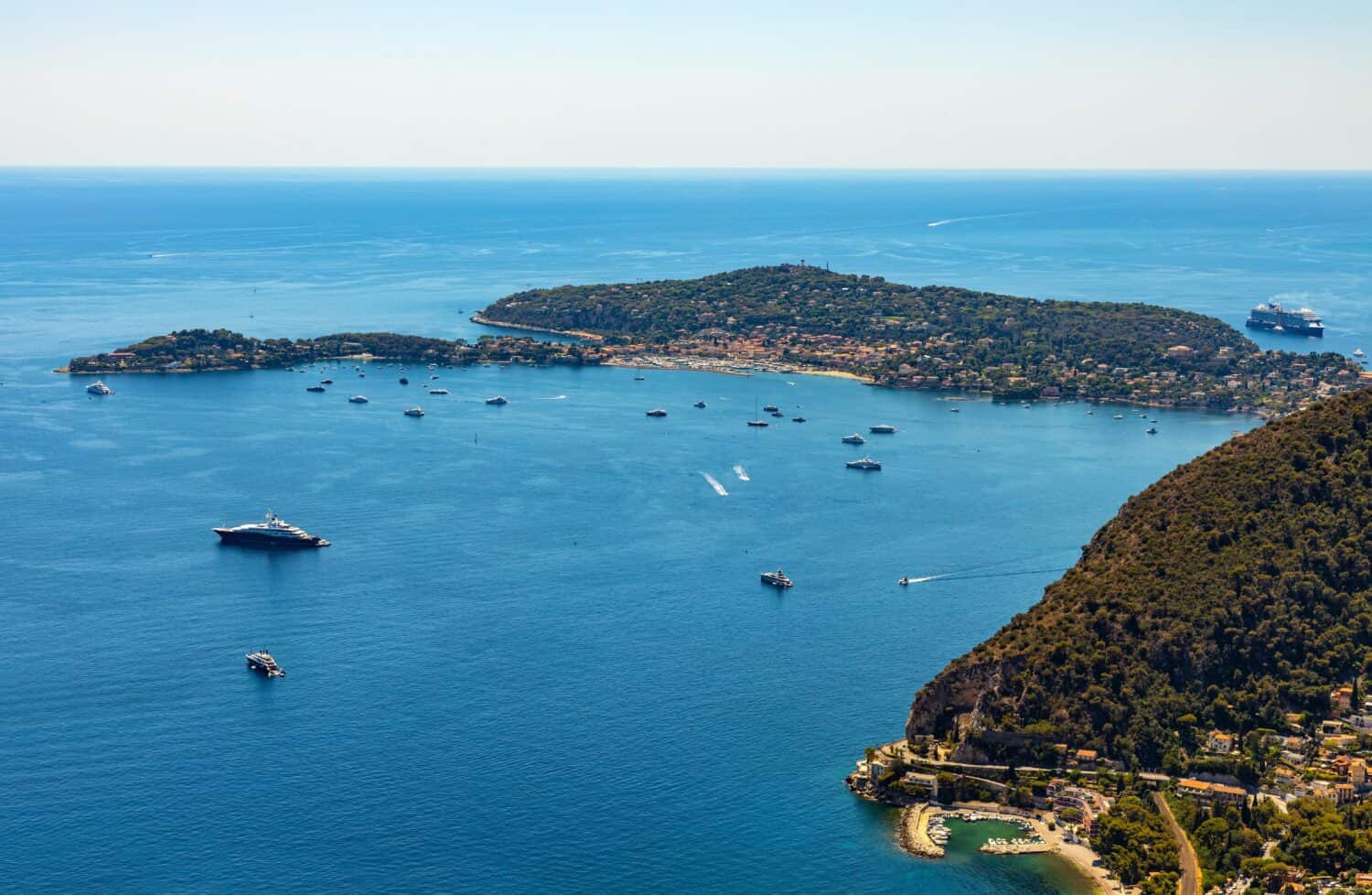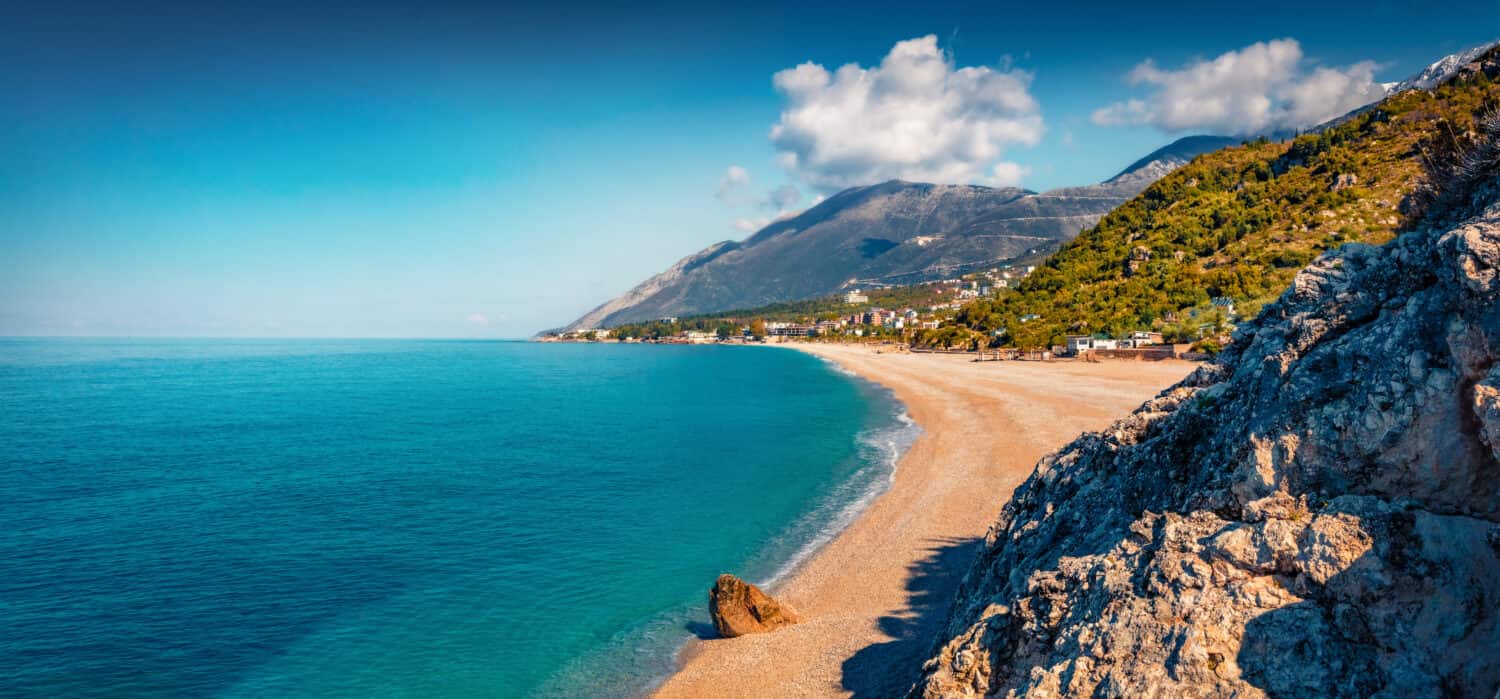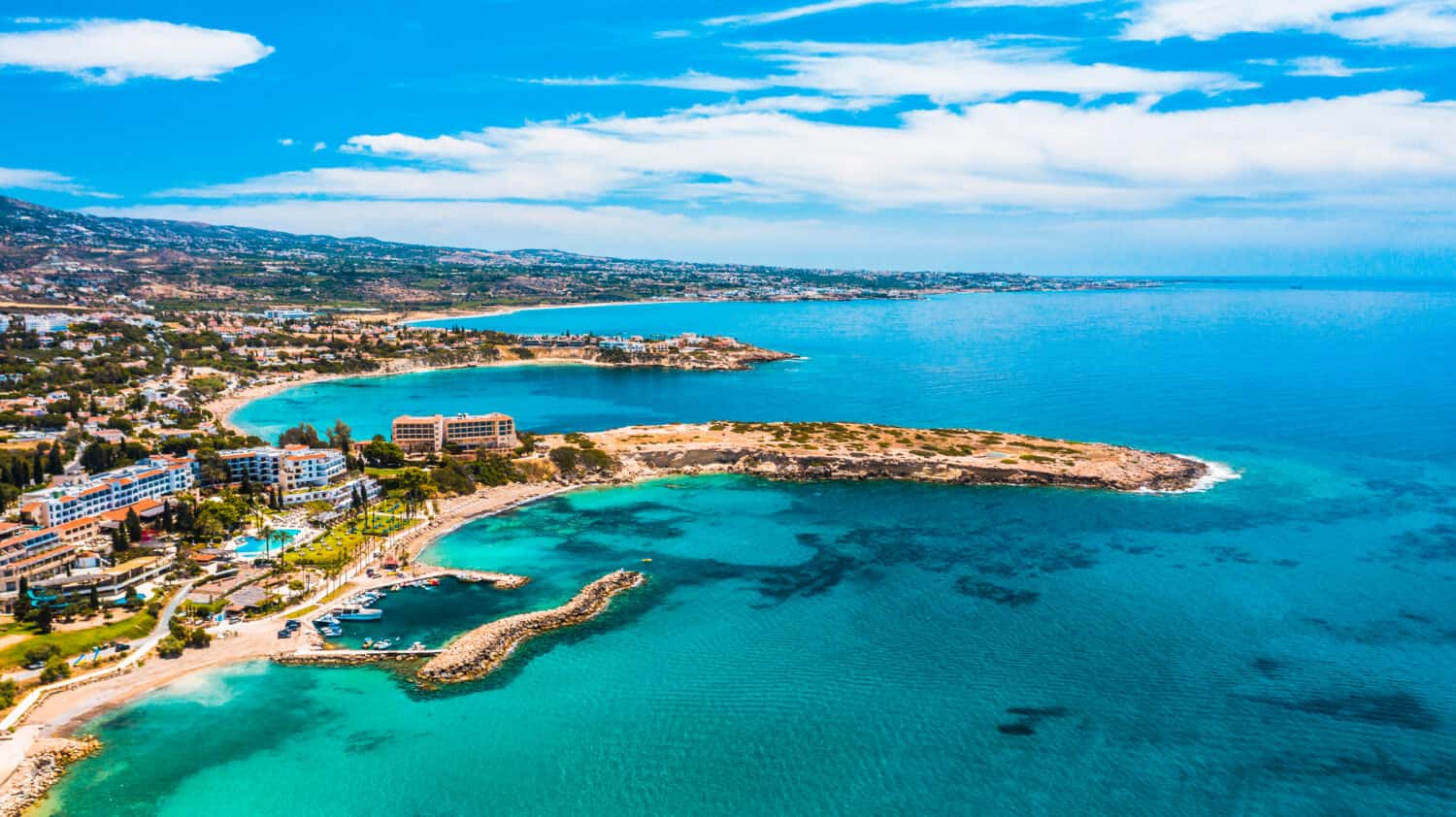When plying the azure waters of the Mediterranean Sea, a person cannot help but be mesmerized. The Mediterranean is beyond breathtaking, not only for its natural beauty but also for its history and the variety of cultures that have evolved along its shores. The Mediterranean is the world’s most immense inland sea, encompassing some 970,000 square miles. It spans three continents — Africa, Asia, and Europe — and is home to around 480 million people, most of whom live along its coasts. But before we discover the 22 countries bordering the Mediterranean Sea, it would serve us well to take a deep dive into its formation and history.

A view of the Mediterranean Sea off the coast of France.
©ArtMediaFactory/Shutterstock.com
Geology
During the late Miocene Epoch, Earth was in a constant state of flux. The planet was cooling and becoming drier. Ice continued to form at the poles as sea levels fell. As the planet dried, many animal and plant species had to adapt or die out. About six million years ago, Earth’s shifting plates cut the Mediterranean Basin off from the Atlantic Ocean. Evaporation then took its toll on the newly-enclosed sea, forcing water levels to fall. In fact, scientists say the basin’s sea level at the time was nearly two miles beneath the current level.
Then about 5.3 million years ago, the seabed collapsed. As it did, flood waters from the Atlantic rushed into the Mediterranean Basin. Scientists say it was a violent flood of Biblical proportions that lasted nearly two years. At its zenith, water levels in the Mediterranean Basin rose more than 32 feet a day. Scientists estimated that the deluge moved at roughly 62.14 miles per hour and carved a thin channel that today separates Spain from Morocco. The flood was so great and so fierce that it filled 90 percent of the Mediterranean Basin in less than two years.
Today that thin channel, the Strait of Gibraltar, connects the Mediterranean to the Atlantic in the west. The Suez Canal links the Mediterranean to the Red Sea in the southeast and the Black Sea in the northeast. Under the water, a ridge dividing the Mediterranean into eastern and western regions separates Sicily and the North African coast. The western Mediterranean is made up of three basins. The eastern portion is divided into two subbasins, including the Ionian Basin, located south of Italy, Albania, and Greece and home to the deepest part of the Mediterranean.

Gibraltar is a British colony at the entrance to the Mediterranean Sea.
©Migel/Shutterstock.com
History
Over the centuries, the Mediterranean, which means “between the lands,” has been called many names. The Romans called the great sea “Our Sea,” while the Turks called it the “White Sea.” Regardless of its name, the Mediterranean has played a pivotal role in the evolution of humankind, as the sea acted as a superhighway on which traders, armies, and people moved.
The Phoenicians were one culture that thrived in the Mediterranean. The Phoenicians built a chain of city-states in the eastern Mediterranean in what is now Israel, Syria, and Lebanon. They were seafaring people who traded across the region. Around 813 B.C.E., Phoenician traders eventually founded Carthage (located in modern-day Tunisia). The Carthaginians later went to war and defeated the Phoenicians, carving out their own empire in the region.
Ancient Egypt was another culture that thrived along the Mediterranean. Early in its history, Egypt was two separate places: Upper Egypt stretched from the first cataract on the Nile River 100 miles from the Mediterranean. Lower Egypt included the Nile River Delta, where the Nile’s water flowed into the Mediterranean. About 5,000 years ago, Menes, the king of Upper Egypt, united both regions, building Egypt’s first capital at Memphis, not far from the coast.
Rome was another dominant power. Founded in 625 B.C.E. on the Italian Peninsula, the ancient city-state had, within 1,000 years of its founding, grown to dominate the entire Mediterranean region during Punic Wars with Carthage. In more modern times, Portugal, Great Britain, and the Ottoman Empire, among others, all vyed to control the Mediterranean at various points.
Today, 22 countries (not including Gibraltar, a British territory) border the Mediterranean Sea. Each has a distinct culture that adds to the vitality of the region. Let’s take a look at these countries by their location.
1. Countries of Southern Europe: Gibraltar, Spain, France, Monaco, Italy, Greece, Malta
If we were to overlay the Mediterranean on the United States, the waterway would stretch from California across the continent to Washington, D.C. Gibraltar, a British territory located on the Iberian Peninsula, is the sea’s western entrance. The northern coast encompasses all of Southern Europe. At the western edge, Spain is one of the region’s most diverse nations, where several different customs, languages, and dialects, including Castilian and Basque, mix. Gibraltar, with its massive rock, towers over the narrow entrance.
East of Spain and Gibraltar is the southern coast of France, also known as the Riviera. The Riviera is known for being the playground of the rich. It has spectacular beaches, ample sunshine, and the Cannes Film Festival. Farther east is Monaco, an independent city-state known for its casinos and automobile racing. Off to the south is the French island of Corsica, the birthplace of Napoleon Bonaparte, the French general and emperor.
Jutting out into the Mediterranean from Southern Europe is the Italian peninsula, a landmass shaped like a boot whose cities spurred the Renaissance. Almost touching the toe of the Italian boot is the volcanic island of Sicily, and south of that is the tiny country of Malta, whose main industries are tourism and textiles.
For many people, there is one country that embodies the ethos of the Mediterranean — Greece. Greece has a rugged landscape marked by olive groves and dusty plains. A number of rocky islands are scattered among the dark blue waters of the Mediterranean as well as the Aegean Sea. Greece’s climate is typically Mediterranean-style. In other words, its winters are mild yet wet. Summers are hot and dry.

The old port of Chania on the Greek island of Crete.
©leoks/Shutterstock.com
2. Countries of the Balkans: Albania, Croatia, Bosnia and Herzegovina, Montenegro, Slovenia
The Mediterranean also includes the Western countries of the Balkan Peninsula, specifically Croatia, Bosnia and Herzegovina, Montenegro, Albania, and Slovenia. Specifically, those nations border the Adriatic Sea, an arm of the Mediterranean. Like the rest of the Mediterranean coast, the Balkan coastline is beyond breathtaking, especially in Albania and Bulgaria.
The Balkans are a mountainous region with steep valleys and deep river gorges. While the winters in the mountains can be cold and summers warm, the coastal areas have a typical Mediterranean climate — rainy in the winter, dry, hot, and mild in the summer. The Balkans is a dividing ground between Europe and Asia, which makes the region culturally diverse. That’s mostly because many outsiders, whether it be the Romans or the Ottomans, competed for the region, creating constant political and social change.

A pristine beach near the Albanian village of Dhermi.
©Andrew Mayovskyy/Shutterstock.com
3. Countries of North Africa: Morocco, Algeria, Tunisia, Libya, Egypt
The North African nations of Morocco, Algeria, Tunisia, Libya, and Egypt make up the southern coast of the Mediterranean, often called the “North African Rim.” Although each has its own distinctive culture, the nations of the Rim share certain traits. Most of the population is Muslim, for instance.
Morocco is slightly larger than California and covers 172,413 square miles. Algeria borders Morocco in the east and the Western Sahara Desert in the south. Morocco’s northern coastal plain is made up of fertile fields of wheat and barley. The Atlas Mountains run diagonally through Morocco, while the Rif Mountains rise from the Mediterranean coast.
The climate along the coast of North Africa is typical Mediterranean, although there are desert environments in Algeria and Morocco. While Libya is a mountainous country, Egypt is mostly desert except at the coast. Egypt is also home to the Suez Canal, which opened in 1869, connecting the Mediterranean to the Red Sea. The canal is a modern marvel that cut the time it took to travel between Europe and Asia.

The Suez Canal allows cargo ships to transport goods around the world.
©Dipix/Shutterstock.com
4. Countries of Western Asia: Turkey, Lebanon, Syria, Israel, Cyprus
The Mediterranean’s eastern terminus is Asia, specifically Turkey and the nations of the Levant.
For thousands of years, the region was an important trade route, linking Europe with the rest of Asia, especially during the 400-year reign of the Ottoman Empire, which was centered in Turkey. Today the region is a mix of cultures and religions, including Islam, Christianity, and Judaism.
Most people living on the coast are highly Westernized in their fashion and trends. Lebanon and Syria are home to ancient ruins, including those of the Roman Empire. Windswept beaches are the norm, especially in Israel, Cyprus, and Lebanon.
Although located in Asia, Cyprus is a Mediterranean island with a decidedly Southern European bent, both culturally and politically. Once a former British colony — as were other nations in the region — Cyprus became independent in 1960. It is the third largest island in the Mediterranean. Sicily and Sardinia are No. 1 and No. 2. Cyprus is a way station for 200 species of migrating birds.

Kyrenia Castle overlooks the Mediterranean Sea.
©Nejdet Duzen/Shutterstock.com
Mediterranean by the Numbers
- Area: 969,100 square miles
- Maximum Depth: 16,896
- Chief Islands: Sicily, Sardinia, Corsica, Crete, Cyprus, Malta
- Inflows: Atlantic Ocean, Black Sea, Nile, Rhone, Po, and Ebro rivers
- Biodiversity: Contains 4 to 18 percent of all marine life.
Thank you for reading! Have some feedback for us? Contact the AZ Animals editorial team.








